“There is a great awakening happening”: The contentious role of religion in educating kids
From the outside, Madjengo looks like your typical mosque. Located in the Muslim-majority town of Gisenyi, at the border between Rwanda and the Democratic Republic of the Congo, the Islamic center houses a mosque and a madrassa, or religious school. But on a recent Friday morning, it’s also overrun by children who play on swings and slides and peek out of the windows of colorful classrooms labeled “baby,” “toddler,” and “middle.”
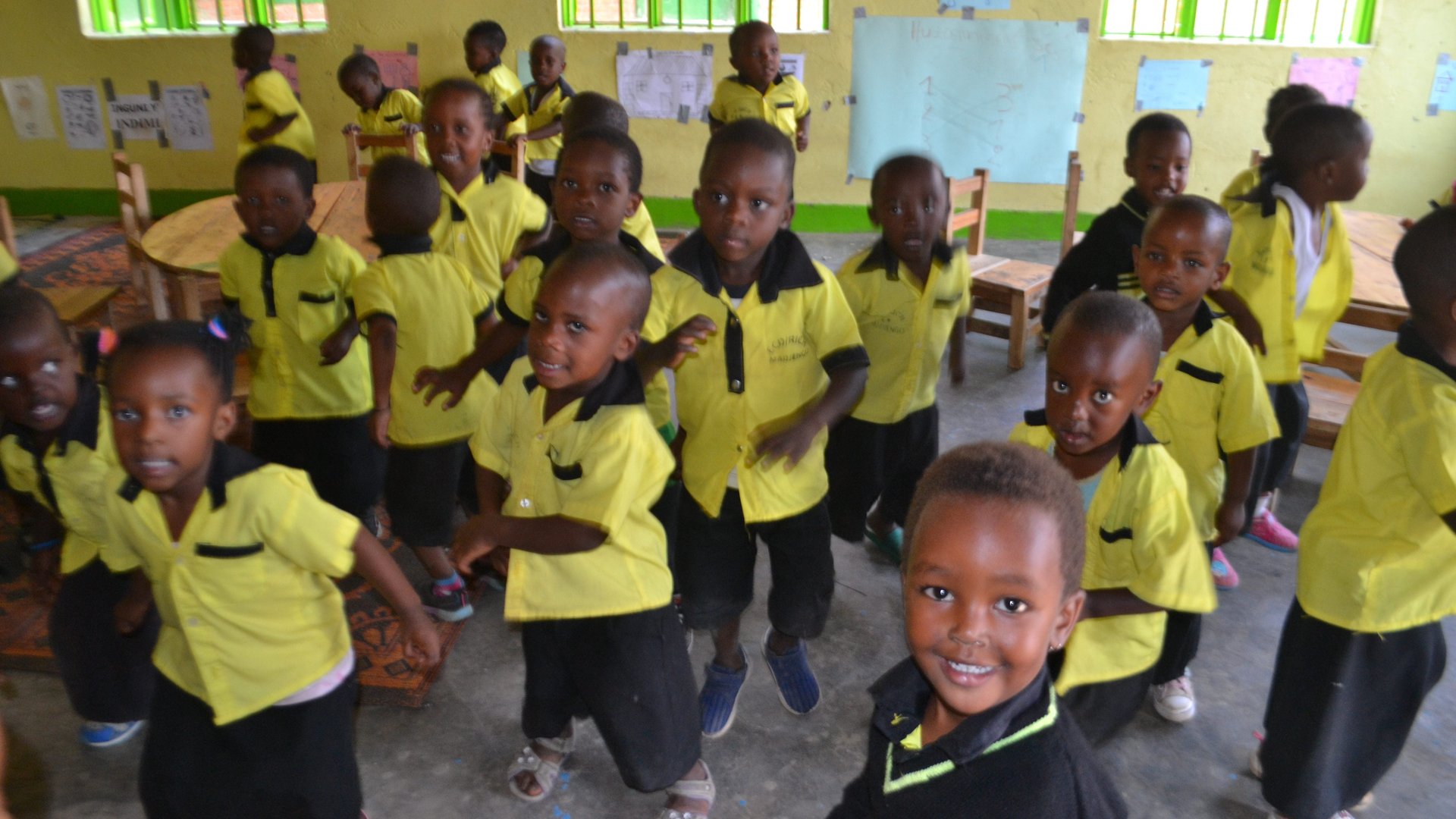

From the outside, Madjengo looks like your typical mosque. Located in the Muslim-majority town of Gisenyi, at the border between Rwanda and the Democratic Republic of the Congo, the Islamic center houses a mosque and a madrassa, or religious school. But on a recent Friday morning, it’s also overrun by children who play on swings and slides and peek out of the windows of colorful classrooms labeled “baby,” “toddler,” and “middle.”
Madjengo is the only public center providing care and education for young children in a two-kilometer radius—what’s known as an early childhood development (ECD) center. In 2017, the Muslim community in Rubavu gave its extra unused space to the nonprofit Rwanda Interfaith Council on Health (RICH). With funding from the United Nations Children’s Fund (Unicef) and the Dutch embassy in Rwanda, RICH turned the space into a playground, three classrooms, and a recreation hall. At any given time, 185 children of different religious backgrounds who are between three and six years old attend Madjengo.
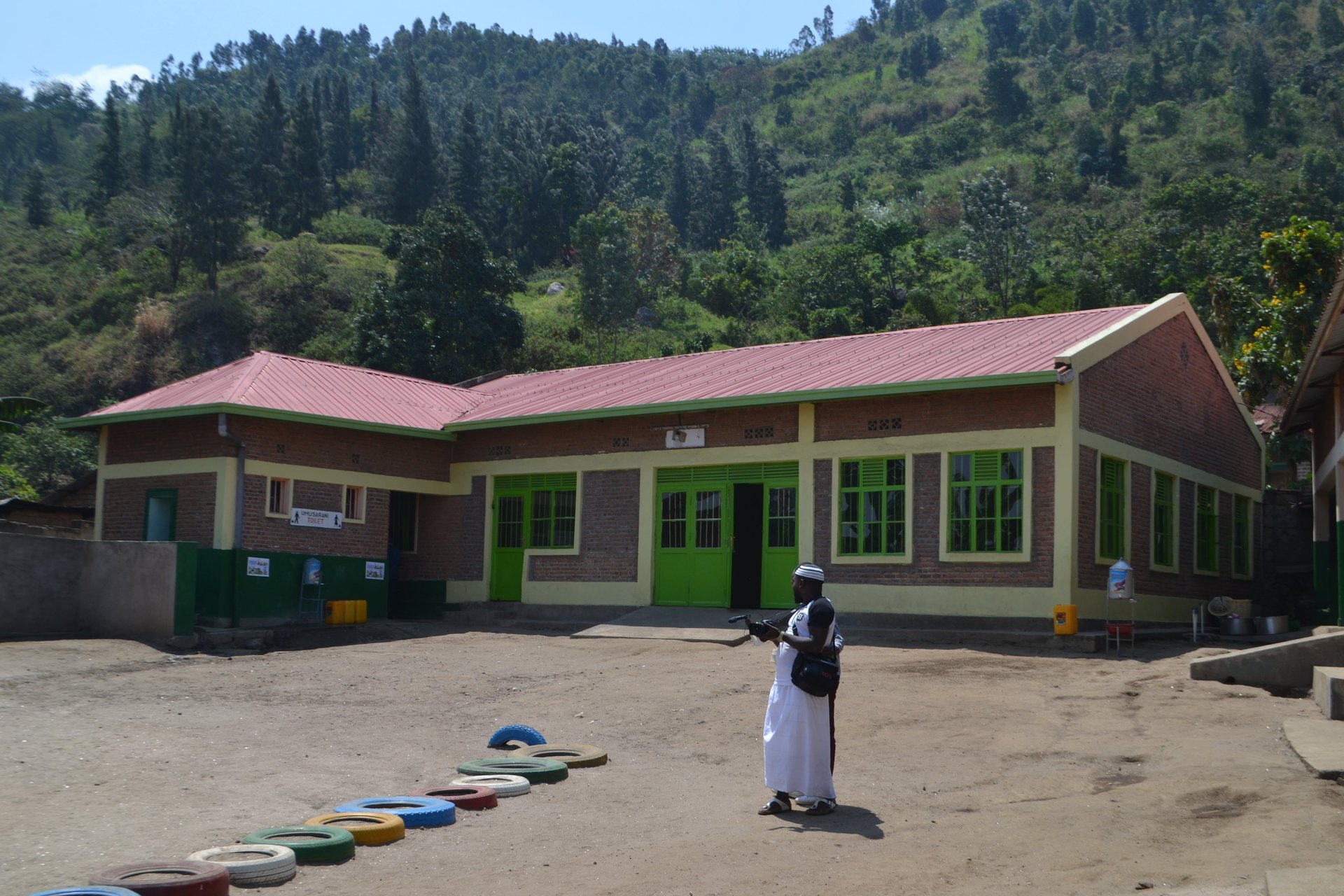
Madjengo is one of 17 different religious ECD centers RICH has helped create in Rwanda as part of a campaign to get religions to see ECD “as part integral of their denominational investment,” said RICH’s program manager Uwimana Eric Willy.
Research shows that investing in the health, safety, and development of children before they turn six pays off manyfold later in their lives. Economists have shown that investments in quality ECD programs can help close the gaps between poor and rich kids, and have a rate of return of 7-10% per year. Because of this, nonprofits, governments, and international institutions have increased their investments in little kids and their families in the past four decades.
But no one has yet solved the billion-dollar question in the early childhood development field: How can the care and education of young children be organized in an affordable, high-quality, and developmentally appropriate way around the world? In most countries, especially low- and middle-income countries, the majority of small children stay at home (pdf) with their families or close caregivers, most of whom are women. Those who don’t stay home are in a mix of private, center-based care, some of which are run by religious groups (accurate estimates are impossible to find). A growing movement is advocating for a greater role of faith communities in ECD services.
The world is getting more religious, not less. As governments look to reach vulnerable children and families where they are, advocates say religious leaders are useful allies. People generally respect and listen to them. Many religious sites have the extra space to host childcare centers and the community buy-in needed to reach families. But there are also reasons to be wary of giving religious groups a greater role in the education and care of little kids, including questions around quality and oversight, proselytization, and the spread of harmful traditional messages (pdf).
As the world moves forward with its goal of investing more resources into children and families, religious organizations and faith leaders appear to be playing an important role in providing early childhood care and education services—and secular groups have noticed, leading to more partnerships. A country like Rwanda, where 97.5% of the population (pdf) holds a religious belief, may provide a roadmap as to how faith-based organizations can contribute to their countries’ ECD agendas.
“In the classroom, we respect that children are from different backgrounds with different religious beliefs.”
On a very hot Friday morning in Gisenyi, Madjengo is abuzz with activity. Near the entrance of the mosque, three dozen parents, mostly mothers, clothed in long jilbabs made out of kitenge, a colorful African fabric popular in Rwanda, sit on plastic chairs. The imam is showing them how to clean their hands and how to prepare a balanced meal.
These parenting classes, run by Unicef-trained volunteers, take place twice a month. Their goal is to help parents better care for their children at home—anything from why hitting children harms their development to why playing with them matters. This is crucial, given that kids only spend about five hours a day at Madjengo, and the rest of their time is with their families. Madjengo also reaches parents in the community who don’t send their children to its ECD center. Every Tuesday, 10 volunteers and four teachers trained by RICH go into the surrounding villages and speak directly to families about things like hygiene or child security.
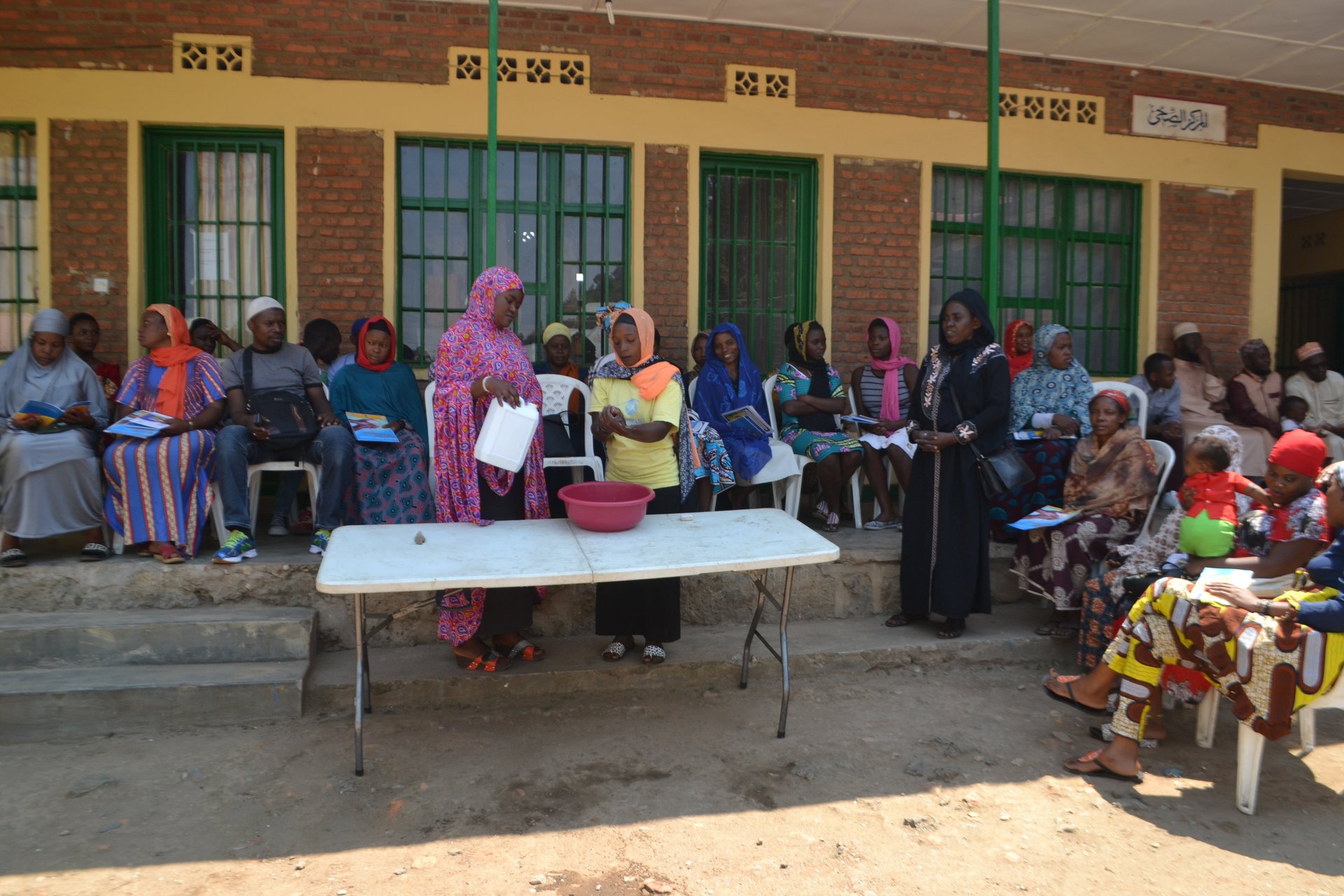
Madjengo sees itself as an institution entrenched in its community, with the ability to train parents and care for children in a cost-effective way, using the existing resources of the mosque and of local families.
While parents attend their classes, children do the same. Three-to-four-year-olds are in the baby class, four-to-five-year-olds in the middle class, and five-to-six-year-olds in the upper class. Each classroom is organized around five “corners,” including one for numeracy, one for literacy, one for pretend play, one dedicated to Rwandan culture, and one for learning French and English. Exercises in these corners are organized according to children’s developmental stages, based on the Rwandan government’s early childhood education curriculum guidelines (pdf).
Kids seem to enjoy their time at Madjengo, but the center faces challenges that are common with faith-based ECD centers. For one, the classrooms are under-staffed. Anyone who’s ever taken care of a toddler will recognize the overwhelmed look on one teacher’s face as she tries to corral 40 of them into doing math exercises. And because Madjengo runs entirely on donations, volunteerism, and a nominal fee from parents, it can’t afford to pay its teachers, so many of them leave.
The lack of funds is visible everywhere. The infrastructure is high quality, given it was renovated for a cost of around $13,000 just two years ago, but the center only offers children one complete meal a week, which comes from the local regional authority. The government has donated milk or porridge in the past, but inconsistently. Parents who can afford it contribute the equivalent of around $3 a month for utensils and food, and those who can’t do little jobs around the school for free, like washing dishes or making toys for kids.
Religious centers aren’t the only childcare services that are under-resourced, in Rwanda and elsewhere, but faith-based centers aim to keep parents’ fees low, and they often cater to families who can’t afford to pay much or anything at all, as Madjengo does. This is good for inclusion, but not for quality.
In some countries, like the United States, faith-based childcare services are exempt from some licensing standards, leading to what some say is a lower standard of care. Using data from the Study of Early Child Care and Youth Development, researchers from Yale University established in 2007 that in the US, religiously-affiliated childcare centers were slightly better quality than for-profit centers, but consistently lower quality than nonprofit non-religious centers. Other research from the US shows that church-operated centers also tend to be poorly run and ill-prepared to teach kids in ways that promote healthy development. They “must answer to the individual congregations and denominations first,” said Mary Bogle, formerly the executive director of an organization representing child- and family-centric foundations, at an event in 2001. “In the time remaining,” she continued, these centers can “network and resource with the larger early childhood community.”
“We all pray to the same God.”
The Rwandan government has made ambitious investments in ECD over the past decade, based on the belief that improving the education will help Rwanda become a middle-income country in the near future. This effort increasingly involves partnerships with faith-based groups, says Freya Zaninka Declercq, a head of department at Rwanda’s National Early Childhood Development Program (NECDP). At the same time, the government has clamped down on some minority religions in recent years, part of a broader rollback of religious freedom across sub-Saharan Africa.
Given that Gisenyi is a Muslim-majority town, it’s not surprising that 70% of the children are Muslim. But none of the materials in the class are religious, says RICH’s Willy, to avoid any concerns about proselytization and to ensure that every parent is comfortable sending their child to Madjengo. “In the classroom, we respect that children are from different backgrounds with different religious beliefs,” he explains.
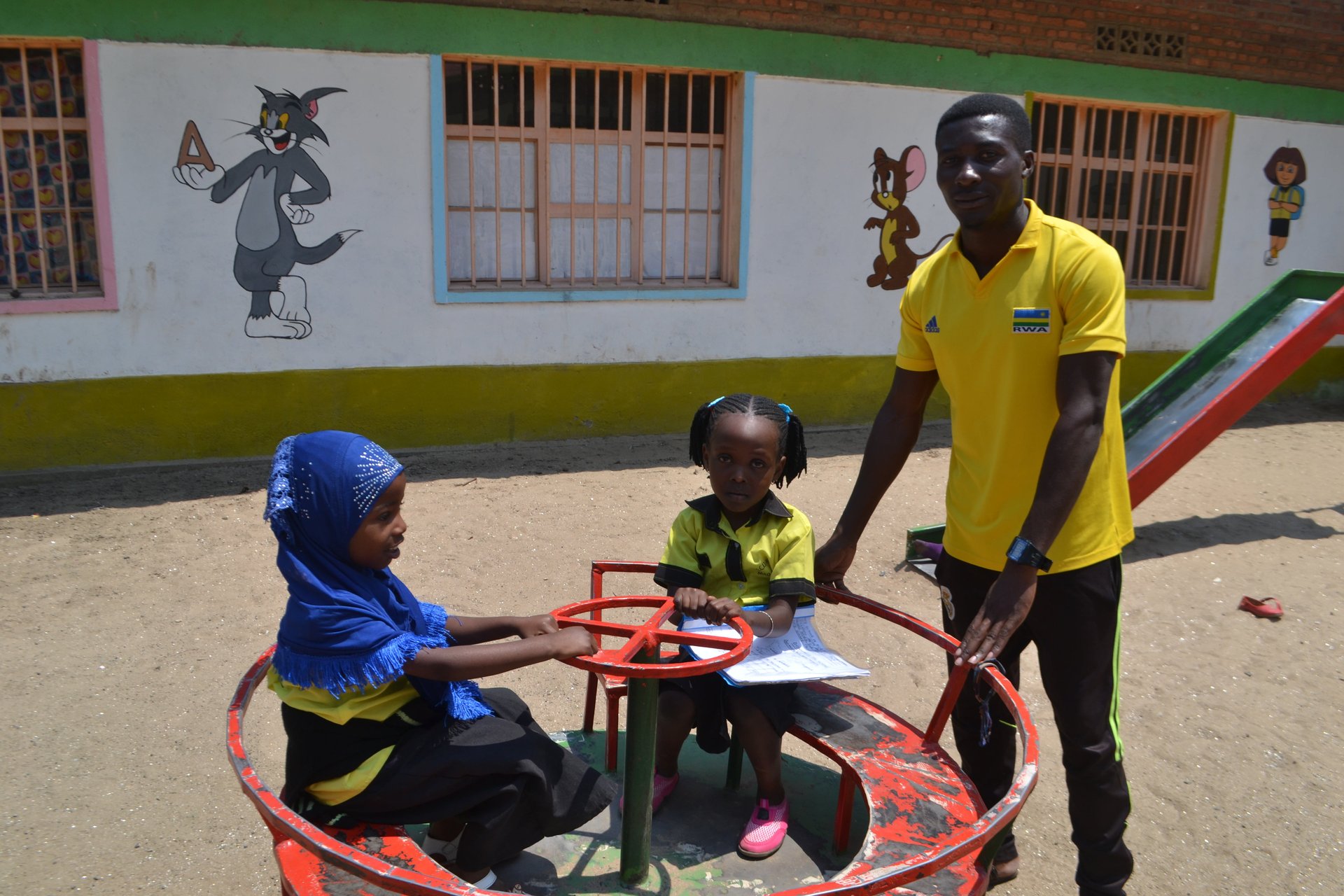
Patrick Maodji, a 22-year old father whose daughter, Lucie, attends Madjengo, is a practicing born-again Christian, and he says he has never felt any religious pressure at the ECD center. “We all pray to the same God, and we are very welcome. They don’t treat people differently depending on their religion.”
While religion isn’t a part of the curriculum at Madjengo, it’s still omnipresent. Half of the female teachers, and many of the female students, wear a hijab, and the coordinator of the center wears a thobe, the traditional Islamic wear for men. Sheik Saidi, the district imam, often drops in for a visit. He seems to view the ECD center as a pipeline for Muslim upper-class children to fill the classrooms of the nearby madrassa when they turn six.
This isn’t unusual. In fact, for many religions, bolstering congregations is the main benefit of hosting an ECD center. “They understand that the future of their churches, the future of their mosques, is in the children that they are trying to develop,” says Willy. “It’s a win-win. You invest in the community and the community gives you back.”
Secular organizations worry that recruiting new congregants is precisely the reason faith-based institutions want to get involved in ECD. But in a country like Rwanda, where almost everyone is religious, religion is inescapable anyways. “Religion is the most central organizing influence on the lives of Rwandans,” says Elliott Friedlander, founder of Spread the Word, a secular nonprofit that promotes a culture of learning in poor countries through interfaith coalitions. What faith-based instruction can provide, he says, is a learning context where parents can connect intangible teachings on ECD with their faith, and where children can connect what they’re learning in the classroom with what they’re hearing and doing at home. In a word, it’s relevant.
“What I think is the biggest untapped resource is not the buildings at the church,” Friedlander says. “It’s the authority that comes from religious leaders and the receptivity of congregants to the messages that church leaders can pass down.”
Those who subscribe to the idea of “culturally responsive teaching” such as the US advocacy group National Association for the Education of Young Children, say that when teachers take the time to learn about a child’s cultural and home background, and adapts her teaching and interactions with the child based on what she’s learned, it can help her “support the child’s social and emotional adjustment to the early childhood environment.”
“Holistic care is also realizing that the spiritual part of a human being is also part of the child,” says Reverend Christo Greyling, senior director for faith and external engagement at World Vision. The efforts underway in Rwanda to engage as many faith communities as possible to achieve Rwanda’s ambitious national early childhood strategy will show whether this model can scale and prove sustainable.
“Governments are not there but the sisters are there, and they will never run away.”
There is a global movement afoot to engage faith communities in the fight to lift kids out of poverty and improve their development. At the heart of this movement is the belief that “religious communities—their leaders, institutions and faith-based organizations—play a critical role in promoting and enhancing the wellbeing of children,” according to Unicef (pdf).
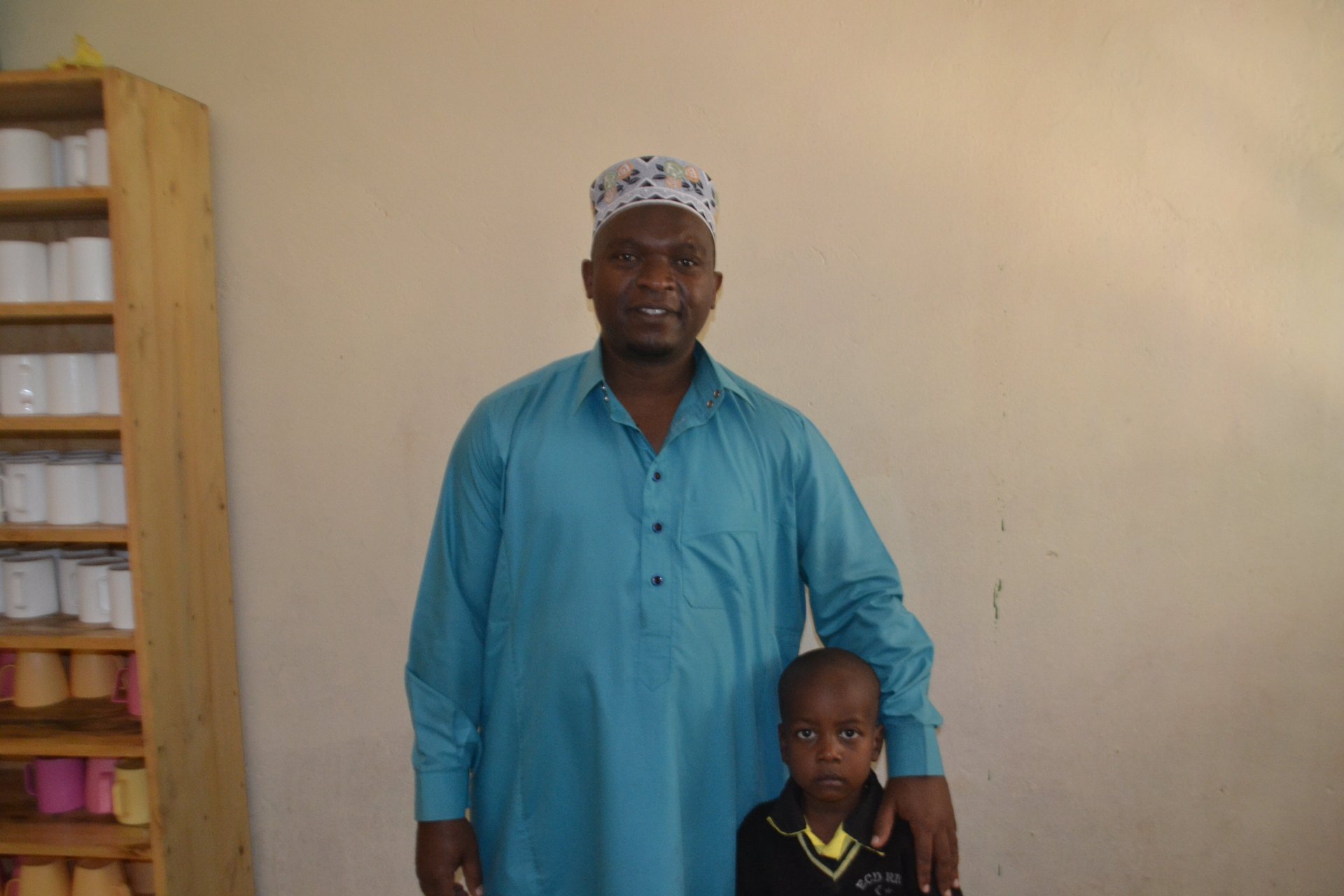
International institutions have worked informally with faith leaders on child health and well-being for decades, but have formalized and in some cases institutionalized these partnerships over the past five years, increasingly realizing that “if we did not engage faith leaders in communities… the change wasn’t going to happen,” said Mercy Niwe, the World Bank’s global faith engagement lead. The Bank is currently developing a formal strategy for engaging with faith-based actors, which will likely launch in 2020. And Unicef last year launched the Faith for Social and Behaviour Change Initiative to gather evidence on and advocate for the role of faith in behavior change.
Groups advocating for faith communities to play more of a role in providing early childhood care and education services also include: faith-inspired organizations, like Catholic Relief Services or World Vision International; local and regional congregations like the Association of Sisterhoods of Kenya; and faith-inspired civil society groups like the Aga Khan Foundation.
Sister Pauline Acayo is part of the Congregation of the Little Sisters of Mary Immaculate in Uganda. She coordinates a project called SCORE-ECD for Catholic Relief Services (CRS) in Kenya, Malawi, and Zambia. The project, which started in 2013, consisted of training Catholic sisters in ECD so that they could then train parents, support pregnant and lactating mothers, and intervene to help children between birth and age two with disabilities and those with HIV. CRS says that 85 sisters in Kenya, Malawi, and Zambia have become “master trainers” in ECD. They in turn have trained more than 1,300 sisters, who have helped 2,600 caregivers and 3,000 children.
Acayo says SCORE illustrates why faith-based ECD models succeed. Religious leaders are uniquely committed to their work and parents tend to be more open to feedback from them on their parenting. “Sisters are so committed,” she says. “They work whether they are on duty or not at all hours, even at night. Many people trust them and they confide in them.” They also tend to work in places other people don’t. “Even where there are no roads, no electricity, deep in the village, governments are not there but the sisters are there, and they will never run away,” she explained.
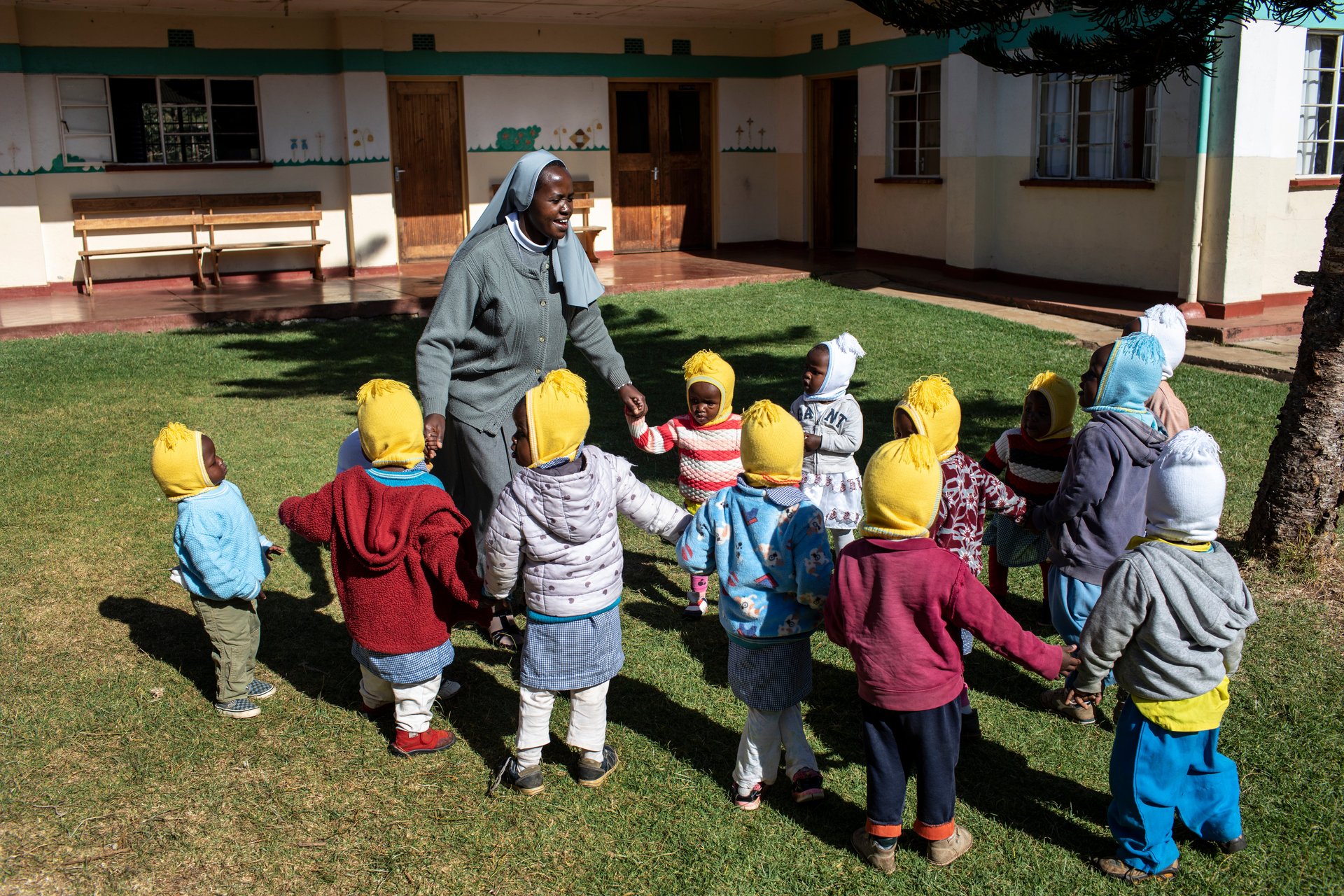
While RICH’s efforts in Rwanda show that faith-based ECD models do not necessarily need to stress religion, SCORE takes a different approach. “Spiritual development is central to the development of the whole child,” reads the SCORE training manual on ECD, which lays out an area of a child’s development it calls “spiritual-moral.” Selam Tadesse, the ECD Technical Advisor at CRS, and lead author of the manual, argues that “ECD doesn’t stop at emotional, social, cognitive, or physical development; it should also include the spiritual aspect.”
There’s no research conclusively proving that faith-based care and education in a child’s early years leads to better outcomes—though actors like the World Bank are looking into it. Like anything, it depends on the quality, the setting, and the child. And because religion is so interwoven in some children’s lives and their relationships with others, it can be difficult to isolate and measure its effect on children’s development.
“There is a great awakening happening.”
Children benefit from growing up in a stable and loving home with adults who care for and protect them. For their brains to grow in the optimal way, they need to feel safe and secure, to be afforded opportunities for early learning and stimulation, and to be healthy and well-fed. Just as religious leaders can influence their congregants to change their behavior for the better—by encouraging them not to be violent with their partners or their kids, for example—so too can they perpetuate practices that are harmful to kids.
For example, researchers from the University of Missouri-Kansas City write that, during the 2014 Ebola epidemic in West Africa, “the widespread embracing of certain traditional and religious practices” in some communities, like relying on spiritual healing or diviners and refusing traditional or preventive medical care, “had tremendous negative effects on the spreading of the disease.”
In a Lancet series (pdf) dedicated to faith-based healthcare, a group of authors from high-profile faith-based and international organizations wrote that, “differences in religious faith-based viewpoints” on certain issues “contribute to the widespread variations in health care worldwide.” Some of those issues are directly in conflict with the goal of protecting children and families, and include female genital mutilation, child marriage, family planning, sexual and reproductive health, the treatment of HIV, and violence against women.
More research is needed to understand the unique role that faith-based people and organizations can play in educating and caring for little kids. There are still many unanswered questions standing in the way of large-scale partnerships between secular and religious groups trying to achieve ECD goals. What isn’t in doubt, says Greyling of World Vision, is that “there is a great awakening happening” among governments and international organizations that faith-based models have the potential to fill education gaps that secular alternatives cannot.
Read more from our series on Rewiring Childhood. This reporting is part of a series supported by a grant from the Bernard van Leer Foundation. The author’s views are not necessarily those of the Bernard van Leer Foundation